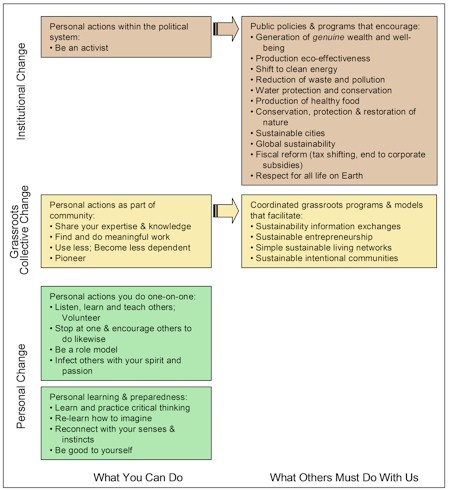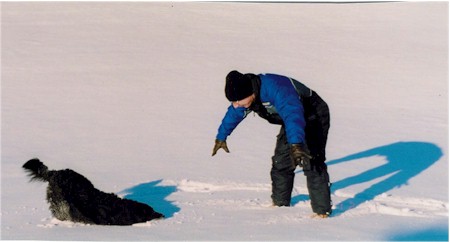 From Agence France-Presse. Some of the slaves freed from years of forced labour in a brickworks owned by a senior Chinese government official What’s Important This Week: Yet More Chinese Atrocities: This week brings news of widespread forced slavery in China’s construction trades, mines, and even Olympic trinkets manufacturing. The victims include young children, and are mostly peasants — the poor, powerless and dispossessed. What is surprising is that anyone is surprised, and that we’re buying the Chinese government line that this is just an isolated problem. This, after all, is the country that systematically chains unwanted girl babies in orphanages to their high chairs. This is the country that knowingly poisons its own people, and the world’s, for profit, and kills, tortures and ‘disappears’ anyone who dares to question authority. This is the country that shows the true face of untrammeled corporatism and what the desperation of poverty, resource exhaustion and horrific overpopulation inevitably leads to. And this is the country upon whose ‘economic miracle’ the US economy, and hence the global economy, now depends utterly. Yet our governments and corporations continue to turn away from the truth, and our citizens blithely go on buying their tainted crap and planning to spend their Olympic dollars propping up this nightmare. We will not be able to tell our grandchildren we were not warned. [Thanks to prad for the Olympics link.] What Would You Like the Inflation Rate to Be: In a masterful con job, US government economists averaged two numbers — huge price increases for food, energy and other consumer staples, and prices in a collapsing housing market that are causing record mortgage defaults, foreclosures and lender bankruptcies — and concluded that, on net, inflation was ‘under control’. Investors cheered and ran up the overpriced stock market even more. How dumb can we get? Fixing Beach Erosion By Dumping Military Ordnance: While the loss of natural barriers against erosion by the sea, and the rising water levels due to global warming, have made the world’s oceanfront properties hugely vulnerable, the short-range thinking of the US Army Corps of Engineers (the clowns that brought us the Katrina disaster) is to uselessly dump offshore sediment back on the shore — including unexploded World War Two ordnance. AT&T Elects to Become Digital Rights Watchdog – With Your Files: Consummate corporatist AT&T is working with the paranoid, greedy entertainment industry to intercept all data flowing through its vast networks and block, rightly or wrongly, anything that is copyrighted. Big Brother is watching. David Weinberger says it isn’t right, and it isn’t. Global Warming, Not Seals or Fishing, Blamed for East Coast Cod Exhaustion: A new Fisheries Society study suggests that environmentalists blaming overfishing, and fishermen blaming seals, for the exhaustion of the Atlantic cod stocks are both wrong. The real culprit is minor changes in ocean temperature, and the resultant major ripple effects on the entire complex ocean ecosystem. We will, alas, never understand what’s happening in complex social and ecological systems until it is too late. Running Out of Oil Faster Than Expected — And Critical Metals Too: New scientific research reported in the Independent and Business Week suggests that the production fall-off will be sharper than even Peak Oil experts have predicted, because producers and governments are obfuscating the data to prevent panic price run-ups. And the rare metals needed to make PCs and other electronic components and equipment are also running out. Thanks to Charles Hall for the links. The Future Garbage Crisis Hits Home in Naples: Cities with daily mountains of unrecycled garbage have always had poor rural counties, disenfranchised urban slums, and desperate struggling nations to take their garbage. Naples is showing what can happen when those cheap dumpsites aren’t available anymore. Thanks to Chris Brainerd for the link. Ideas for the Week: The value of local experiments: Canadian Jason Diceman explains at the grassroots level what Chavez is trying to do to reform the political and economic system in Venezuela, from the bottom up. Obviously inspired by the Cuban experiments of Castro, and likely to be subverted when the CIA assassinates or overthows Chavez, these are important experiments for those thinking ahead to the world post-civilization. Just for fun department: My daughter sent me this, which has been floating around the Internet: How To Properly Place New Employees:
1. Put 400 bricks in a closed room. 2. Put your new hires in the room and close the door. 3. Leave them alone and come back after 6 hours. 4. Then analyze the situation:
|
Navigation
Collapsniks
Albert Bates (US)
Andrew Nikiforuk (CA)
Brutus (US)
Carolyn Baker (US)*
Catherine Ingram (US)
Chris Hedges (US)
Dahr Jamail (US)
Dean Spillane-Walker (US)*
Derrick Jensen (US)
Dougald & Paul (IE/SE)*
Erik Michaels (US)
Gail Tverberg (US)
Guy McPherson (US)
Honest Sorcerer
Janaia & Robin (US)*
Jem Bendell (UK)
Mari Werner
Michael Dowd (US)*
Nate Hagens (US)
Paul Heft (US)*
Post Carbon Inst. (US)
Resilience (US)
Richard Heinberg (US)
Robert Jensen (US)
Roy Scranton (US)
Sam Mitchell (US)
Tim Morgan (UK)
Tim Watkins (UK)
Umair Haque (UK)
William Rees (CA)
XrayMike (AU)
Radical Non-Duality
Tony Parsons
Jim Newman
Tim Cliss
Andreas Müller
Kenneth Madden
Emerson Lim
Nancy Neithercut
Rosemarijn Roes
Frank McCaughey
Clare Cherikoff
Ere Parek, Izzy Cloke, Zabi AmaniEssential Reading
Archive by Category
My Bio, Contact Info, Signature Posts
About the Author (2023)
My Circles
E-mail me
--- My Best 200 Posts, 2003-22 by category, from newest to oldest ---
Collapse Watch:
Hope — On the Balance of Probabilities
The Caste War for the Dregs
Recuperation, Accommodation, Resilience
How Do We Teach the Critical Skills
Collapse Not Apocalypse
Effective Activism
'Making Sense of the World' Reading List
Notes From the Rising Dark
What is Exponential Decay
Collapse: Slowly Then Suddenly
Slouching Towards Bethlehem
Making Sense of Who We Are
What Would Net-Zero Emissions Look Like?
Post Collapse with Michael Dowd (video)
Why Economic Collapse Will Precede Climate Collapse
Being Adaptable: A Reminder List
A Culture of Fear
What Will It Take?
A Future Without Us
Dean Walker Interview (video)
The Mushroom at the End of the World
What Would It Take To Live Sustainably?
The New Political Map (Poster)
Beyond Belief
Complexity and Collapse
Requiem for a Species
Civilization Disease
What a Desolated Earth Looks Like
If We Had a Better Story...
Giving Up on Environmentalism
The Hard Part is Finding People Who Care
Going Vegan
The Dark & Gathering Sameness of the World
The End of Philosophy
A Short History of Progress
The Boiling Frog
Our Culture / Ourselves:
A CoVid-19 Recap
What It Means to be Human
A Culture Built on Wrong Models
Understanding Conservatives
Our Unique Capacity for Hatred
Not Meant to Govern Each Other
The Humanist Trap
Credulous
Amazing What People Get Used To
My Reluctant Misanthropy
The Dawn of Everything
Species Shame
Why Misinformation Doesn't Work
The Lab-Leak Hypothesis
The Right to Die
CoVid-19: Go for Zero
Pollard's Laws
On Caste
The Process of Self-Organization
The Tragic Spread of Misinformation
A Better Way to Work
The Needs of the Moment
Ask Yourself This
What to Believe Now?
Rogue Primate
Conversation & Silence
The Language of Our Eyes
True Story
May I Ask a Question?
Cultural Acedia: When We Can No Longer Care
Useless Advice
Several Short Sentences About Learning
Why I Don't Want to Hear Your Story
A Harvest of Myths
The Qualities of a Great Story
The Trouble With Stories
A Model of Identity & Community
Not Ready to Do What's Needed
A Culture of Dependence
So What's Next
Ten Things to Do When You're Feeling Hopeless
No Use to the World Broken
Living in Another World
Does Language Restrict What We Can Think?
The Value of Conversation Manifesto Nobody Knows Anything
If I Only Had 37 Days
The Only Life We Know
A Long Way Down
No Noble Savages
Figments of Reality
Too Far Ahead
Learning From Nature
The Rogue Animal
How the World Really Works:
Making Sense of Scents
An Age of Wonder
The Truth About Ukraine
Navigating Complexity
The Supply Chain Problem
The Promise of Dialogue
Too Dumb to Take Care of Ourselves
Extinction Capitalism
Homeless
Republicans Slide Into Fascism
All the Things I Was Wrong About
Several Short Sentences About Sharks
How Change Happens
What's the Best Possible Outcome?
The Perpetual Growth Machine
We Make Zero
How Long We've Been Around (graphic)
If You Wanted to Sabotage the Elections
Collective Intelligence & Complexity
Ten Things I Wish I'd Learned Earlier
The Problem With Systems
Against Hope (Video)
The Admission of Necessary Ignorance
Several Short Sentences About Jellyfish
Loren Eiseley, in Verse
A Synopsis of 'Finding the Sweet Spot'
Learning from Indigenous Cultures
The Gift Economy
The Job of the Media
The Wal-Mart Dilemma
The Illusion of the Separate Self, and Free Will:
No Free Will, No Freedom
The Other Side of 'No Me'
This Body Takes Me For a Walk
The Only One Who Really Knew Me
No Free Will — Fightin' Words
The Paradox of the Self
A Radical Non-Duality FAQ
What We Think We Know
Bark Bark Bark Bark Bark Bark Bark
Healing From Ourselves
The Entanglement Hypothesis
Nothing Needs to Happen
Nothing to Say About This
What I Wanted to Believe
A Continuous Reassemblage of Meaning
No Choice But to Misbehave
What's Apparently Happening
A Different Kind of Animal
Happy Now?
This Creature
Did Early Humans Have Selves?
Nothing On Offer Here
Even Simpler and More Hopeless Than That
Glimpses
How Our Bodies Sense the World
Fragments
What Happens in Vagus
We Have No Choice
Never Comfortable in the Skin of Self
Letting Go of the Story of Me
All There Is, Is This
A Theory of No Mind
Creative Works:
Mindful Wanderings (Reflections) (Archive)
A Prayer to No One
Frogs' Hollow (Short Story)
We Do What We Do (Poem)
Negative Assertions (Poem)
Reminder (Short Story)
A Canadian Sorry (Satire)
Under No Illusions (Short Story)
The Ever-Stranger (Poem)
The Fortune Teller (Short Story)
Non-Duality Dude (Play)
Your Self: An Owner's Manual (Satire)
All the Things I Thought I Knew (Short Story)
On the Shoulders of Giants (Short Story)
Improv (Poem)
Calling the Cage Freedom (Short Story)
Rune (Poem)
Only This (Poem)
The Other Extinction (Short Story)
Invisible (Poem)
Disruption (Short Story)
A Thought-Less Experiment (Poem)
Speaking Grosbeak (Short Story)
The Only Way There (Short Story)
The Wild Man (Short Story)
Flywheel (Short Story)
The Opposite of Presence (Satire)
How to Make Love Last (Poem)
The Horses' Bodies (Poem)
Enough (Lament)
Distracted (Short Story)
Worse, Still (Poem)
Conjurer (Satire)
A Conversation (Short Story)
Farewell to Albion (Poem)
My Other Sites



 Christopher Key is a former fellow Salon blogger, and a friend. He’s a Vietnam War vet and the descendant of F Scott Key, who wrote the US national anthem. He was so unhappy with Bush he announced plans in 2004 to move to Canada and renounce his US citizenship. This, of course, earned him a
Christopher Key is a former fellow Salon blogger, and a friend. He’s a Vietnam War vet and the descendant of F Scott Key, who wrote the US national anthem. He was so unhappy with Bush he announced plans in 2004 to move to Canada and renounce his US citizenship. This, of course, earned him a  I‘ve received some interesting responses to my post yesterday wherein I said:
I‘ve received some interesting responses to my post yesterday wherein I said:


 Most of my readers know that, a year ago, I was diagnosed with severe ulcerative colitis, a chronic inflammatory bowel disease. The disease has no known cause or cure, and flares up irregularly, usually provoked by stress. It is one of a large group of chronic diseases, including arthritis, diabetes, lupus, endometriosis, MS, chronic fatigue syndrome, asthma, allergies, and Crohn’s disease, all of which are manifested by recurrent hyperactivity of the immune system, usually producing cell or tissue death and related inflammation, as a ‘storm’ of cytokine messenger proteins urges the body’s T- and B- immune cells to run somewhat amok in an over-response or mis-response to a perceived threat. [Cytokine ‘storms’, interestingly, are also apparently produced by pandemic influenza (both human and poultry forms).]
Most of my readers know that, a year ago, I was diagnosed with severe ulcerative colitis, a chronic inflammatory bowel disease. The disease has no known cause or cure, and flares up irregularly, usually provoked by stress. It is one of a large group of chronic diseases, including arthritis, diabetes, lupus, endometriosis, MS, chronic fatigue syndrome, asthma, allergies, and Crohn’s disease, all of which are manifested by recurrent hyperactivity of the immune system, usually producing cell or tissue death and related inflammation, as a ‘storm’ of cytokine messenger proteins urges the body’s T- and B- immune cells to run somewhat amok in an over-response or mis-response to a perceived threat. [Cytokine ‘storms’, interestingly, are also apparently produced by pandemic influenza (both human and poultry forms).]



